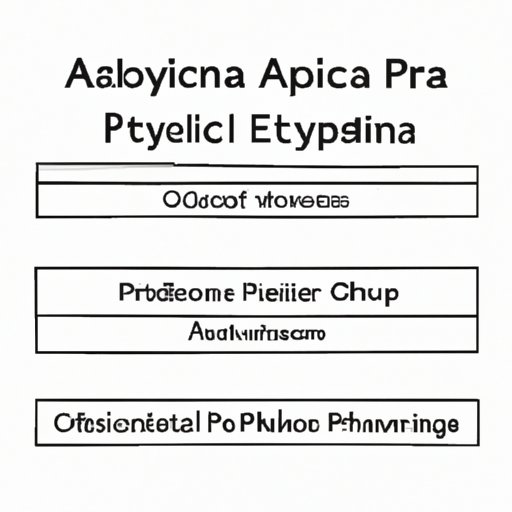Introduction
Properly citing sources is crucial in academic writing because it allows readers to verify the information and ideas presented, avoids plagiarism, and gives credit to the original authors. APA citation style is one of the most commonly used citation styles across various academic fields such as psychology, education, sociology, and business. This style provides rules and guidelines for citing all types of sources, including books, journal articles, websites, and more. This article aims to provide a step-by-step guide on how to cite APA style, an interactive infographic, a checklist, a video tutorial, a case study, and insights from an expert to help students master APA citation.
Step-by-Step Guide
APA citation follows a basic structure: author, date, title, and publication information. The author’s name comes first, followed by the publication date, title, and other publication-related information such as the publisher and publication location. For example, a book should be cited as follows:
In-text citation: (Author’s Last Name, Publication Year)
Reference list: Author’s Last Name, First Initial. (Publication Year). Title of Book. Publisher.
When citing a journal article, the structure changes slightly:
In-text citation: (Author’s last name, publication year, p. page number)
Reference list: Author’s last name, First Initial. (Publication Year). Title of article. Title of Journal, volume number (issue number), page range. DOI or URL if available.
When citing a website, the structure changes again:
In-text citation: (Author’s last name or screen name, publication date or n.d. if not available)
Reference list: Author’s Last name, First Initial. (Publication date or n.d.). Title of web page. Website name. URL
When citing a source with multiple authors, list up to 20 authors and separate them with commas. If there are more than 20, list the first 19 and add an ellipsis before the final author. If a source has a group author instead of an individual author, use the group name as the author in both the in-text citation and reference list.
Examples of different citations:
Book: Smith, J. K. (2020). An Introduction to APA Style. Oxford University Press.
Journal Article: Chen, L. Y., & Huang, Y. (2021). The effects of online learning on academic achievement. Educational Research, 63(2), 145-157. https://doi.org/10.1080/00131881.2021.1877625
Website: National Institute of Mental Health. (n.d.). Attention-Deficit/Hyperactivity Disorder (ADHD): The Basics. https://www.nimh.nih.gov/health/publications/attention-deficit-hyperactivity-disorder-adhd-the-basics
Common Mistakes and How to Avoid Them
One of the most common mistakes students make in APA citation is incorrect formatting, such as using the wrong font size, margins, or spacing. Another common mistake is omitting important information, such as the publication date or page numbers. To avoid these mistakes, it is essential to carefully read and follow the APA guidelines and double-check your work before submitting it.
Interactive Infographic
An interactive infographic that summarizes the main rules and regulations of APA citation can make the process of learning more engaging. Using graphics, animations, and interactive elements, the infographic should highlight proper APA citation format and provide examples from real sources, such as books, journal articles, and websites.
Checklist
A checklist can be a useful resource for students to ensure they have properly cited their sources in APA style. The checklist should include the essential components of APA citation, such as author name, date, title, and publication information. By following the checklist, students can avoid common mistakes and ensure they have followed APA guidelines correctly.
Video Tutorial
A video tutorial can be an effective way to visually explain how to cite APA style. The tutorial should highlight common errors, provide tips, and show students the process step-by-step. It should also offer examples and be engaging and easy to follow.
Case Study
A case study can provide students with a relatable example of a situation where they may struggle with APA citation. The case study should provide scenarios where students face challenges and overcome them using APA guidelines. Students can then learn from the solutions presented and use them to improve their own APA citation skills.
Expert Interview
An interview with an APA citation expert, such as an educator, librarian, or writing center tutor, can offer students additional insights into how to cite sources properly. The interview can cover tips, tricks, and best practices for citing sources in APA, as well as common mistakes that students make.
Infographic with Examples
A visual infographic that explains APA citation rules using examples from various academic fields can help students see how to apply APA citation properly. The infographic should show how to cite sources in different formats, such as articles, books, and websites, and include examples from various academic fields, such as psychology, education, sociology, and business.
Conclusion
In conclusion, properly citing sources is crucial in academic writing, and APA citation style is one of the most commonly used styles. By following the step-by-step guidelines, interactive infographic, checklist, video tutorial, case study, and insights from an expert, students can avoid common mistakes and master APA citation. They can then apply APA citation rules to various sources in their specific academic fields. We invite readers to share their experiences, challenges, and tips on APA citation in the comments below.
